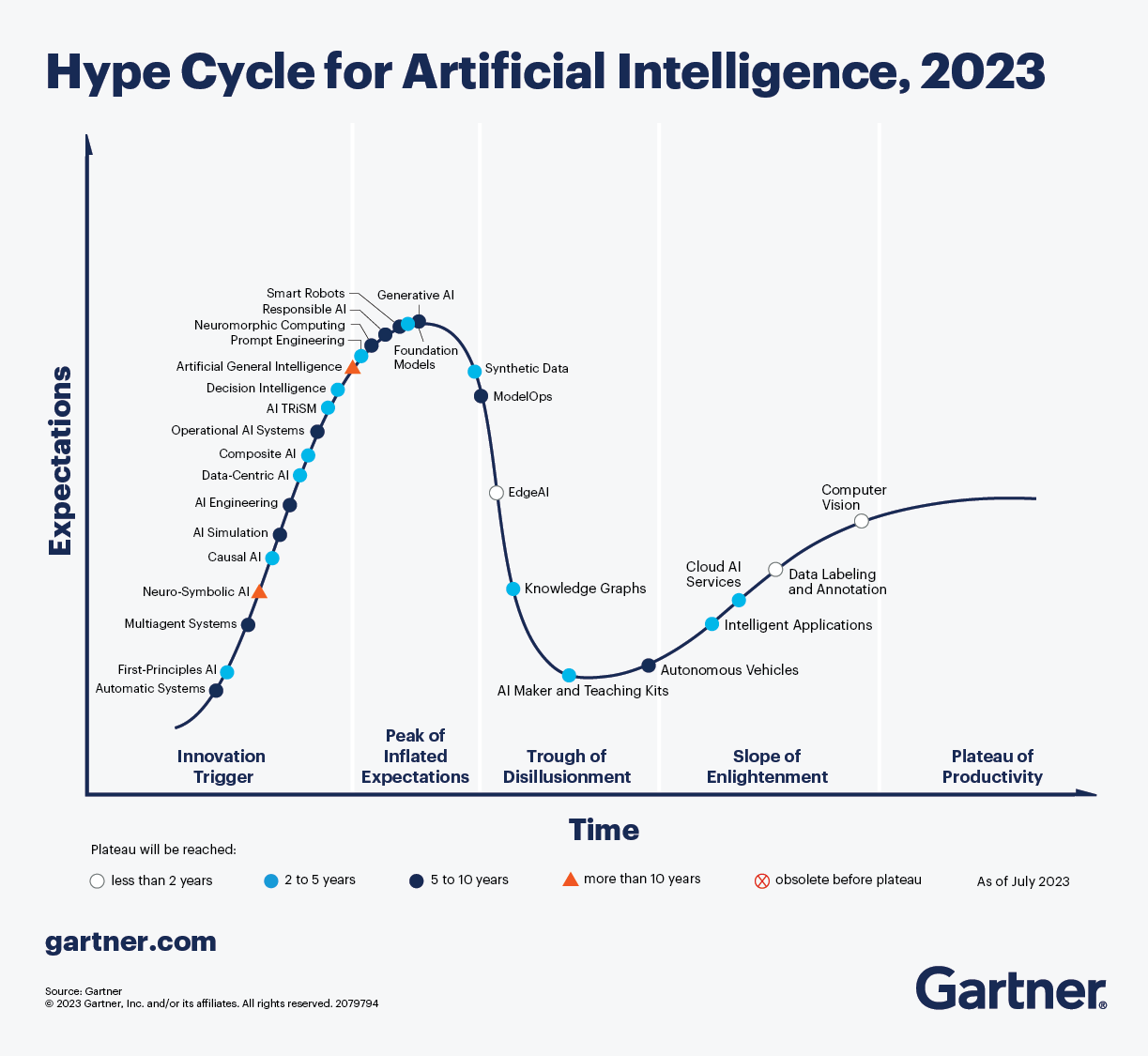Recently I have been reading and learning more about AI Hype Cycles.
I first learned this term from Professor Kristen Thomasen when she did a guest lecture for our Legal Methodologies graduate class and discussed it with respect to her own research on drone technology and writing/researching during hype cycles. Since then, in almost AI-related seminar I have attended the term has come up with respect to the current buzz and attention being paid to AI. For example, Timnit Gebru in her talk for the GC Data Conference which I recently attended noted that a lot of what is being repackaged as new AI today was the same work in ‘big data’ that she studied many years back. For my own research, it is important to understand hype cycles to ground my research into more principled and foundational approaches so that I can write and explore the changes in technology while doing slow scholarship notwithstanding changing public discourse and the respective legislative/regulatory changes that might follow.
A good starting point for understanding hype cycles, especially in the AI market, is the Gartner Hype Cycle. Who those who have not heard the term yet, I would recommend checking out the following video:
Gartner reviews technological hype cycles through five phases: (1) innovation trigger; (2) peak of inflated expectations; (3) trough of disillusionment; (4) slope of enlightenment, and plateau of productivity.
It is interesting to see how Gartner has labelled the current cycles:
One of the most surprising things to me on first view is how automatic systems and deicsion intelligence is still on the innovation trigger – early phase on the hype cycle. The other is how many different types of AI technology are on the hype cycle and how many the general public actually know/engage with. I would suggest at most 50% of this list is in the vocabulary and use of even the most educated folks. I also find that from a laypersons perspective (which I consider myself on AI), challenges in classifying whether certain AI concepts fit one category or another or are a hybrid. This means AI societal knowledge is low and even for some of the items that are purportedly on the Slope of Enlightment or Plateau of Productivity.
It is important to note before I move on that that the AI Hype Cycle also has been used in terms outside of the Gartner definition, more in a more criticial sense of technologies that are in a ‘hype’ phase that will eventually ebb and flow. A great article on this and how it affects AI definitions is the piece by Eric Siegel in the Harvard Business Review how the hype around Supervised Machine Learning has been rebranded into a hype around AI and has been spun into this push for Artificial General Intelligence that may or may not be achievable.
Relevance to the Immigration Law Space
The hype cycle is relevant to Canadian immigration law in a variety of ways.
First, on the face, Gartner is a contracting partner of IRCC which means they are probably bringing in the hype cycle into their work and their advice to them.
Second, it brings into question again how much AI-based automated decision-making systems (ADM) is still in the beginning of the hype cycle. It make sense utilizing this framework to understand why these systems are being so heralded by Government in their policy guides and presentation, but also that there could be a peak of inflated expectations on the horizon that may lead to more hybrid decision-making or perhaps a step back from use.
The other question is about whether we are (and I am a primary perpetrator of this) overly-focused on automated-decision making systems without considering the larger AI supply chain that will likely interact. Jennifer Cobbe et al talk about this in their paper “Understanding accountability in algorithmic supply chains” which was assigned for reading in my Accountable Computer Systems course. Not only are there different AI components, providers, downstream/upstream uses, and actors that may be involved in the AI development and application process.
Using immigration as an example, there may be one third-party SAAS that checks photos, another software using black-box AI may engage in facial recognition, and ultimately, internal software that does machine-learning triaging or automation of refusal notes generation. The question of how we hold these systems and their outputs accountable will be important, especially if various components of the system are on different stages of the hype cycle or not disclosed in the final decision to the end user (or immigration applicant).
Third, I think that the idea of hype cycles is very relevant to my many brave colleagues who are investing their time and energy into building their own AI tools or implementing sofware solutions for private sector applicants. The hype cycle may give some guidance as to the innovation they are trying to bring and the timeframe they have to make a splash into the market. Furthermore, immigration (as a dynamic and rapidly changing area of law) and immigrants (as perhaps needing different considerations with respect to technological use, access, or norms) may have their own considerations that may alter Gartner’s timelines.
It will be very interesting to continue to monitor how AI hype cycles drive both private and public innovation in this emerging space of technologies that will significantly impact migrant lives.

